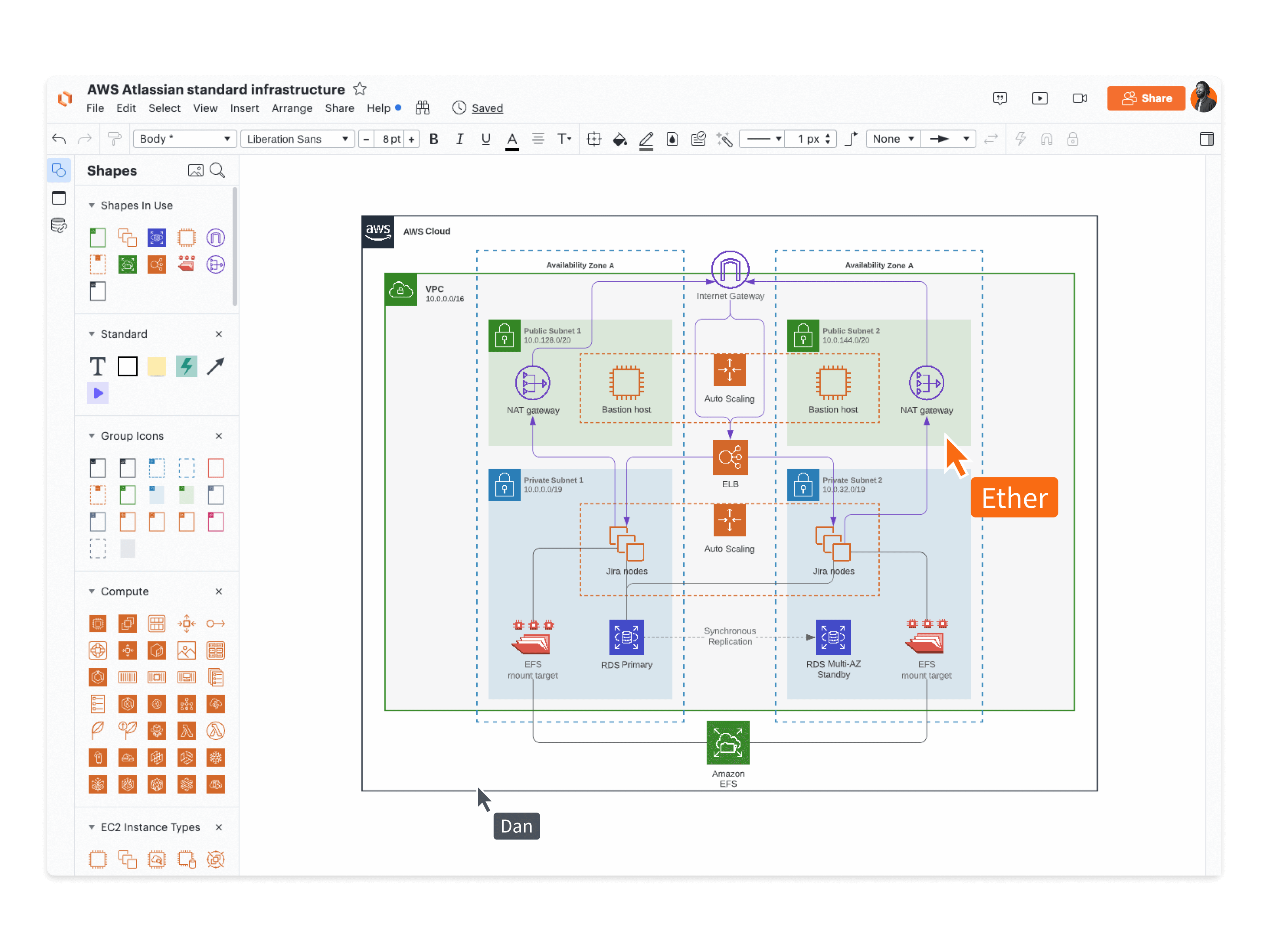
The real impact of business complexity (with tips to create clarity)
Reading time: about 8 min
Businesses today are more complex than ever before, with a continually growing amount of tools and data to manage. At the same time, market conditions and working environments are evolving at an accelerated pace, making it imperative for businesses to react and make decisions quickly. To respond successfully to change, organizations need a clear understanding of their processes, tools, and data—and how they all fit together.
The combination of increased complexity and accelerated change puts undeniable pressure on organizations: Those that are able to understand their business and the impact of their decisions clearly will be better equipped to adapt to change than those overwhelmed with complexity. In other words, to stay competitive, organizations need a way to clarify business complexity.
What is business complexity?
Business complexity refers to the formation of a large, interconnected network of technologies, data, products or services, and people within an organization. It’s often a byproduct of positive business changes like innovation, growth, and expanding product portfolios. Essentially, as businesses add new tools, support new clients, and scale their organization, more and more interconnections and dependencies form within the business.
However, business complexity can—and often does—grow out of control. Generally, the larger the enterprise, the more complex the business will be. And for some businesses, the web of interconnected data, technology, and processes becomes so convoluted that it’s hard to determine how elements impact each other and which ones are even necessary to the business.
What’s causing the recent increase in business complexity?
The past few years have undoubtedly increased the level of complexity many organizations experience. The COVID-19 pandemic acted as an accelerator for change—in a short span of time, organizations had to adjust their strategies to a new market, enable a remote workforce with new tools, and expedite digital transformation efforts.
All of these changes meant adopting a plethora of new processes, workflows, and tools in a relatively short timeframe. Recent customer research from Okta (2022 Business at Work report) shows the average number of apps organizations deploy has increased by 24% since 2016. For large organizations (those with over 2,000 employees), this averages out to 187 apps.
The focus on digitization remains a priority today, even despite concerns about less favorable economic conditions. According to SWZD’s 2023 State of IT report, 51% of companies still plan to increase YoY IT spending in 2023 (compared to only 6% planning to cut spending).
Investing in new technologies is often necessary to accelerate key use cases and allow for more advanced analytics, but there’s a catch: More tools means more data silos. As different teams across the business invest in different tools, it becomes incredibly difficult to connect the dots across tools and understand how they fit together.
In fact, the most significant data governance challenge organizations face is disparate data sources and systems, according to a market report from Ventana. Essentially, data silos make it incredibly challenging for organizations to ensure the availability, usability, cost-effectiveness, and security of their data. This complexity is compounded further by the layers of processes that organizations put in place as their organization grows.
The impact of business complexity
Business complexity affects nearly every aspect of an organization. Some of the most significant areas of impact include:
Reduced collaboration, productivity, and innovation
As businesses grow more complex, workers are inundated with more information than they can effectively make sense of. According to research by Pega, 90% of workers reported “managing information overload” as a top contributor to complexity in their job.
The time it takes to find relevant information, determine what’s up to date, and prioritize actionable steps based on that information takes away greatly from the time that could be spent on higher-value collaborative tasks like brainstorming ideas and discussing innovative solutions. Recent data suggests that on average, workers spend five hours each week just searching for information related to projects—that’s almost a full work day.
Not to mention, trying to communicate complex concepts to stakeholders for buy-in can start to feel like a near-impossible task. The same Pega research shows that navigating internal processes and bureaucracy is the second greatest contributor to daily complexity, often leaving teams misaligned and hindering progress toward goals.
Stalled decision-making and growth
One of the biggest problems of complexity is that it makes analyzing and synthesizing data considerably difficult. When data is siloed off, teams see only a fragmented view of the organization, making it difficult to obtain all the necessary context to make confident decisions.
In fact, 86% of respondents in an HBR survey reported that decision-making and business processes had become so complex in their companies that it was inhibiting their ability to grow. The irony here is striking: Complexity, which originally resulted from growth, can turn into a major impediment to growth.
This complexity is costing organizations big time. For managers at an average Fortune 500 company, time spent making decisions translates into more than 530,000 days of lost working time and roughly $250 million of wasted labor costs per year (McKinsey).
Increased security risk
Data silos not only impact collaboration and decision-making, but they also increase risk as important data is scattered across tools. Recent research from PwC shows that 75% of executives are concerned about cyber and privacy risks resulting from too much complexity in their organizations.
The more complex a business is, the harder it will be for organizations to understand where data lives and secure it properly.
Tips for managing business complexity
Trying to simplify business complexity can feel like playing a precarious (and high-stakes) game of Jenga—could removing one item cause the whole structure to come tumbling down?
Although it seems like an intimidating undertaking, there are steps organizations can take to clarify and manage the complexity and, ultimately, keep the business moving forward efficiently.
1. Distill complexity into easy-to-understand formats, like visuals
To manage complexity, organizations should start by understanding the complexity—what’s causing it, how is everything connected, and what are the most important pieces?
Visuals are one of the most effective ways to show the relationships between different objects and illustrate the different layers of a business.
Start by visualizing the current state of your business processes, systems, and architecture. You may consider using a tool that automatically visualizes your technical systems through integrations to save time and ensure the visuals stay current. With this understanding, you’ll be able to see the impact of potential changes and easily identify opportunities to streamline the business.

2. Consolidate tools and bridge technological silos
Consolidation should be a top priority for organizations wishing to manage business complexity. When evaluating new technologies to implement, prioritize comprehensive solutions that can integrate with your existing tools—or even replace them.
By reducing the number of free-standing tools you have, you’ll decrease the number of data silos across the organization. With fewer data silos, teams will have an easier time managing security risks and making decisions.
3. Foster organizational agility to adapt to complexity
Complexity is a natural side effect of growth; as long as your business is growing, it will experience complexity. That’s why it’s important to not only take steps to clarify and reduce complexity but also to adapt to complexity. This is where organizational agility comes into play.
Focus on building an internal business agility capability into your company culture to ensure your organization is set up to respond to both internal and external change, including emerging threats or opportunities.
4. Create a single source of truth
Keeping teams across the organization aligned is critical to managing complexity. To ensure everyone has the information they need to innovate and make decisions, look for ways to centralize information, including ideas, past decisions, processes, systems, and more. Most cloud-based repositories offer secure and accessible storage options and are particularly useful for hybrid or dispersed teams.
A single source of truth saves time and acts as a launching point for collaborative discussions and ideation, making innovation a more consistent and scalable activity. And as team members come and go, it ensures that work and knowledge stay within the company.
Lucid’s team hubs feature is a great way to get started. Create a home base for your team by bringing together the resources you need to initiate work, coordinate progress, and stay aligned—all in one place.
Clarify complexity with visual collaboration
Business complexity is the inevitable result of growth. As your business grows, it’s important to take steps to clarify the complexity in order to increase efficiency, scale innovation, and reduce risk.
Many organizations are taking the first step in clarifying the complexity by turning to visual collaboration solutions. Through visual collaboration, teams can work together to distill complex concepts, collaborate continuously, and capture the context they need to make decisions in one central location.

Learn more about visual collaboration.
Read the blogAbout Lucid
Lucid Software is the leader in visual collaboration and work acceleration, helping teams see and build the future by turning ideas into reality. Its products include the Lucid Visual Collaboration Suite (Lucidchart and Lucidspark) and airfocus. The Lucid Visual Collaboration Suite, combined with powerful accelerators for business agility, cloud, and process transformation, empowers organizations to streamline work, foster alignment, and drive business transformation at scale. airfocus, an AI-powered product management and roadmapping platform, extends these capabilities by helping teams prioritize work, define product strategy, and align execution with business goals. The most used work acceleration platform by the Fortune 500, Lucid's solutions are trusted by more than 100 million users across enterprises worldwide, including Google, GE, and NBC Universal. Lucid partners with leaders such as Google, Atlassian, and Microsoft, and has received numerous awards for its products, growth, and workplace culture.
